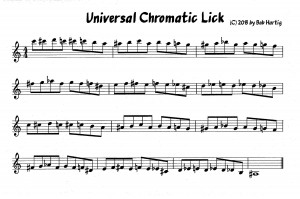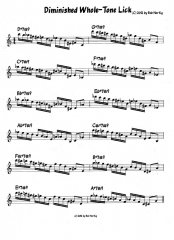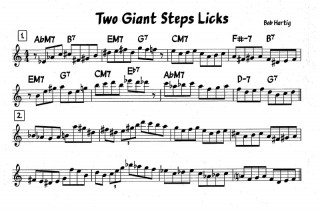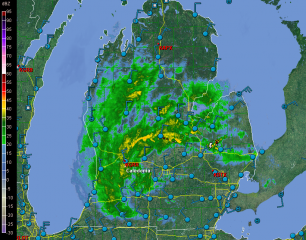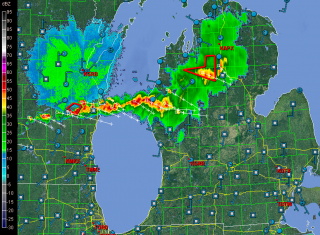Every other Thursday night, guitarist Steve Hilger hosts a jazz jam in the lounge of Noto’s Old World Italian Dining at 6600 28th Street SE. Located in the Grand Rapids bedroom community of Cascade in southeast Kent County, the restaurant is easily accessible from the main drag. There, from 7:00–10:00 p.m., Steve provides a topnotch rhythm section for jazz musicians to sit in with and air out their chops.
While seasoned players are always gladly welcomed, Steve is particularly interested in giving high school and college musicians the chance to perform onstage with a live band. That kind of opportunity doesn’t come often or easily in West Michigan. Thanks to the vision and persistence of well-known jazz veteran Randy Marsh, downtown Grand Rapids has had a jazz jam venue for the last two years on Sunday nights, first at HopCat and lately at Speak EZ. Now Steve offers a similar opportunity to the outlying southeast area, within easy reach of musicians in the Forest Hills, Caledonia, East Grand Rapids, Kentwood, Lowell, and Middleville school districts.
This is the kind of thing I longed for as a younger player–and as an older player, for that matter. Let’s face it, West Michigan is not New York or Chicago. There are plenty of musicians here but not many chances for them to get together informally and blow. So the jam sessions at Noto’s are a boon to developing and even professional jazz instrumentalists and vocalists. The setting is one where parents can feel comfortable letting their teen musician hang out with other players, and the rest of the family will enjoy it as well if they wish to listen.
The sessions have gotten off to a slow start, but there’s plenty of reason for them to take off once area musicians find out about them. Word just needs to spread. So I’m doing my part with this post. I’ve had a blast sitting in with Steve and the guys, and I invite you to do the same if you’re a jazz practicioner.
And that’s enough from me. It’s time to hear from Steve.
_______________
Question: How long have you played guitar? Who are some of your influences?
Steve: I started playing guitar in the eighth grade with a cheap nylon string classical guitar and a borrowed Peter, Paul, and Mary songbook. I started with “Don’t Think Twice, Its Alright.” I actually learned the finger picking before the strumming.
My influences are many. I am a fan of a lot of different types of music including jazz, blues, acoustic folk, rock, and classical. Some of my influential guitar players include Carlos Santana, Eric Clapton, and Stevie Ray Vaughn. I would have to say that the most influential was Carlos Santana, because even as a kid, I marvelled at his melodic lines. It was not the number of notes he played that mattered, but which notes he played.
Yet musically overall, my influences are more from horn players such as Miles Davis, John Coltrane and Charlie Parker. Miles Davis was another example of playing the right notes instead of a lot of them.
Q: You’ve had your own bands for quite a while now, and you’re well-established in the Grand Rapids and West Michigan music scene. How did you get started?
S: In college, I had a friend who I started a band with. We wrote our own tunes and eventually recorded them in a studio in New York. The music took a back seat while I was raising a family and starting a legal career. After a divorce, I rekindled my lifelong passion of guitar playing and song writing. Nothing quite like a divorce to inspire you to write lyrics.
I went into the studio in 2005 to record some of the new tunes, and then we performed them live at the 2007 Grand Rapids Festival of the Arts. Shortly after that, we started to play blues and started performing around town.
Q: You started with a blues band. More recently you formed a jazz combo. What led you to diversify?
S: Ever since I heard Miles Davis’s “Kind of Blue” shortly after it came out, I was fascinated by jazz. Then, in the mid-70s, when The Allman Brothers put out “Live at the Fillmore East,” I discovered the blues. I’ve always loved both genres. So when I realized I had a blues band full of really talented jazz musicians, I decided to do both and started a jazz band as well.
Q: You and veteran drummer Randy Marsh are doing your utmost to uphold a vital tradition of jazz: the jam session. Randy hosts a Sunday evening session at Speak EZ in downtown Grand Rapids. You host one at Noto’s in Cascade every other Thursday, and you’re particularly interested in encouraging high school and college musicians to participate. Why are you doing this and what would you like to see happen? What do younger musicians get out of a jam session that they can’t get other ways?
S: When I was in high school in a small town thirty-six miles west of New York City, I played trumpet in the school jazz band. Our band leader played gigs in New York City and was pretty well known as a trombone player. She was able to attract top talent to come to our school and give clinics. I do not remember all of them, but I specifically remember Count Basie and Doc Severenson.
That was a huge opportunity, and it would be nice to pass it on in some small way. Student musicians need a chance, and have the right, to make mistakes. Once they get past the fear of failure, they can start to experiment, learn, and develop confidence which carries over in all aspects of life. If, for as long as I do this, I am able to reach one student in this fashion, all the effort will be worth it. Young musicians really need a place to come out and give it a go.
Q: You provide a unique tie-in between the Noto’s jam session and the selection of young musicians for this summer’s GRandJazzFest. Please tell us about it.
S: Every other Thursday, my jazz trio, TrioJazz has been performing at Noto’s. We thought that Noto’s would be a good venue for students to sit in and work their chops on jazz improvisation.
I am on the selection committee for musical acts for the 2013 GRJazz Festival. The Board thought it would be a good idea to have students participate in the festival, and we needed a way to reach out to jazz students to see who was willing and able to perform. It’s part of the GRJazz Festival’s commitment to include education as part of its goals. The Thursday night Noto’s gig provides a perfect opportunity to find student jazz musicians who might play in the festival.
The Noto’s gig is really the only way I will get the chance to meet student musicians in the community. And if a young musician feels they did not do as well as they would have liked on a given night, they can always come back and try again. There is no point-scoring here. While we hope to pick some of the top students to participate, everyone who comes out and plays is a winner in their own right. We will be selecting five or so musicians who will be given a chance to jump on the big stage at the jazz festival to showcase their talents.
Q: It can feel intimidating for a high school kid to set foot onstage and play with professional musicians. But you and your musicians are hugely encouraging and love to have younger players sit in. Talk about what a student can expect when they walk in with their instrument. Do you have any advice for them?
S: They and their family can expect a casual, wholesome setting and a warm welcome. They can listen as long as they want, assemble their instrument when they feel ready, and then play the tune or tunes of their choice.
My first piece of advice is, relax. Have fun! Enjoy the moment. Nobody is scoring anything here and you have nothing to lose. All of us started out at some point. So pick a tune, preferably out of the Real Book, or bring charts, and let’s see if we can have some fun!
Q: Jam sessions aside, what are you striving for personally in your own growth curve as a musician?
S: I strive to be the best musician I can be. That applies to all the music I play. I practice a lot.
One common experience among many musicians, me included, is that you always hear other musicians who do something better than you. What you don’t realize is that you yourself do some things better than anyone else. I remember an interview with a jazz great who was so disappointed with a solo he played because he hit some wrong notes, or so he thought. Then he noticed that everyone who was following him started playing those wrong notes because the “wrong notes” had now become hip. So I am always listening, always trying to get better, always trying to hear what other musicians are doing to see if there are any take-away things I can do or use.
Q: A steady diet of nothing but music makes for a great player but a narrow life. You own your own law firm, and I know that you absolutely love what you do. What other interests and activities do you have which round you out as a person?
S: First and foremost, my interests are my three wonderful kids and the lovely Deborah Richmond. They are the foundation of my life.
I truly enjoy my work and the firm I started and have helped to grow. We have great partners and a wonderful group of clients.
I am also an avid photographer and have traveled throughout the United States on photography trips, focusing mainly on nature, wildlife, and landscape photography. I have published articles and photos, and started all that as a news photographer in the late 1960s when photographers were somewhat of a novelty.
For many years, I traveled the country competing in archery, which ended in multiple state and national championships, records, and even the 2004 Olympic trials. Now, my son and I are into the shooting sports such as skeet and big-bore, long-range rifle shooting.
